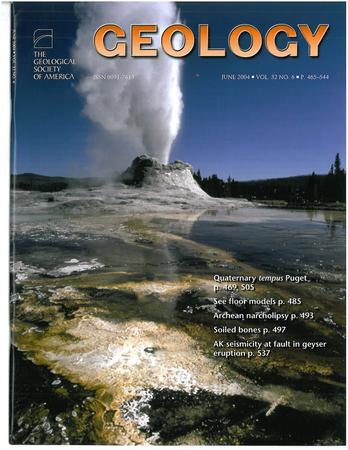Rethinking the “Grenville Flood” of Laurentian detrital zircon: Proximal sources, not continental rivers
IF 4.6
1区 地球科学
Q1 GEOLOGY
引用次数: 0
Abstract
The widespread presence of Mesoproterozoic detrital zircon in western Laurentia has long been interpreted as evidence for transcontinental river systems transporting sediment from the Grenville orogen. This model asserts that Grenville-age zircon were carried across Laurentia during the Neoproterozoic and Paleozoic, but recent isotopic and provenance data challenge this interpretation. Here, we show that detrital zircon age distributions and Hf isotopic compositions east and west of the Transcontinental Arch remained distinct until the late Paleozoic, inconsistent with repeated sediment mixing by a long-lived transcontinental river system. Instead, multiple Stenian magmatic sources in western Laurentia, including the Llano Uplift, Pikes Peak batholith, and the Southwestern Laurentia Large Igneous Province, provide plausible proximal sources of zircon. Additionally, the Pearya terrane, the northern Yukon, and formerly adjacent Antarctic crust may have contributed detrital zircon to western Laurentia’s sedimentary record. Post-Devonian sediment redistribution may have been accomplished by a combination of fluvial, shallow marine, and eolian processes, or indirect sediment routing. These findings suggest that late Paleozoic processes, rather than a Proterozoic transcontinental river(s), were responsible for distributing Grenville-age zircon across Laurentia. This revised model fundamentally alters the prevailing understanding of sediment routing in deep time and highlights the importance of reevaluating long-assumed geodynamic and provenance frameworks.重新思考劳伦碎屑锆石的“格伦维尔洪水”:近源,而非大陆河流
Laurentia西部广泛存在的中元古代碎屑锆石长期以来被解释为横贯大陆的河流系统从Grenville造山带输送沉积物的证据。该模型认为grenville时代的锆石在新元古代和古生代被带过Laurentia,但最近的同位素和物源数据挑战了这一解释。在此,我们发现横贯大陆拱东西部的碎屑锆石年龄分布和Hf同位素组成直到晚古生代仍然明显不同,这与长期横贯大陆河流系统的反复沉积混合不一致。相反,Laurentia西部的多个Stenian岩浆源,包括Llano隆起、Pikes峰岩基和西南Laurentia大火成岩省,提供了可能的锆石近端来源。此外,梨亚地体、育空北部和以前邻近的南极地壳可能为劳伦西亚西部的沉积记录贡献了碎屑锆石。泥盆纪后的沉积物再分配可能是由河流、浅海和风成作用的组合完成的,或者是间接的沉积物移动。这些发现表明,格伦维尔时代的锆石在Laurentia分布的原因是晚古生代的作用,而不是元古代的横贯大陆的河流。这个修正后的模型从根本上改变了对深时间沉积物路径的普遍理解,并强调了重新评估长期假设的地球动力学和物源框架的重要性。
本文章由计算机程序翻译,如有差异,请以英文原文为准。
求助全文
约1分钟内获得全文
求助全文
来源期刊

Geology
地学-地质学
CiteScore
10.00
自引率
3.40%
发文量
228
审稿时长
6.2 months
期刊介绍:
Published since 1973, Geology features rapid publication of about 23 refereed short (four-page) papers each month. Articles cover all earth-science disciplines and include new investigations and provocative topics. Professional geologists and university-level students in the earth sciences use this widely read journal to keep up with scientific research trends. The online forum section facilitates author-reader dialog. Includes color and occasional large-format illustrations on oversized loose inserts.
 求助内容:
求助内容: 应助结果提醒方式:
应助结果提醒方式:


